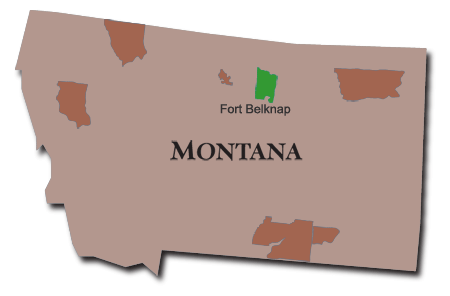
The American Indian Relief is a 501(c)3 nonprofit charity. We rely on your generous support to continue our work.
Donate today at www.aircprograms.org/donate
Page printed at:
http://nrcst.convio.net/site/PageServer?pagename=airc_res_mt_fortbelknap&printer_friendly=1
Reservations
Montana: Fort Belknap Reservation
About the Gros-Ventre and Assiniboine: The Assiniboine, or ‘one who cooks with stones,’ split with the Yanktonai Sioux in the 17th century and migrated to the Northern Plains. The Gros-Ventre and Assiniboine were nomadic hunters and warriors who depended on buffalo for food, clothing, and tepees. When the buffalo population was decimated by white hunters, the tribes agreed to settle on reservations for survival. The Assiniboine live on both the Fort Belknap and Fort Peck Indian Reservations in Montana, and on several reservations in Canada.
History of the Reservation: Fort Belknap initially served as a trading post and a government agency. The Gros-Ventre, confederates of the Blackfeet Nation, and the Assiniboine Nation signed the Fort Laramie treaties of 1851 and 1855 that established their territories. A congressional act in 1888 established the Fort Belknap Reservation.
Life on the Reservation: Most Fort Belknap residents work in ranching and farming. The Indian Health Service, the Bureau of Indian Affairs, and the Fort Belknap Tribe also provide employment. In addition, tourism and sale of local arts and crafts help drive the Fort Belknap economy. Despite these attempts to fuel the Reservation’s economy, almost half of the Fort Belknap tribal members live below the poverty line.
How can I help?
Fort Belknap on the map: North-central Montana.
Tribal enrollment: 5,133.
